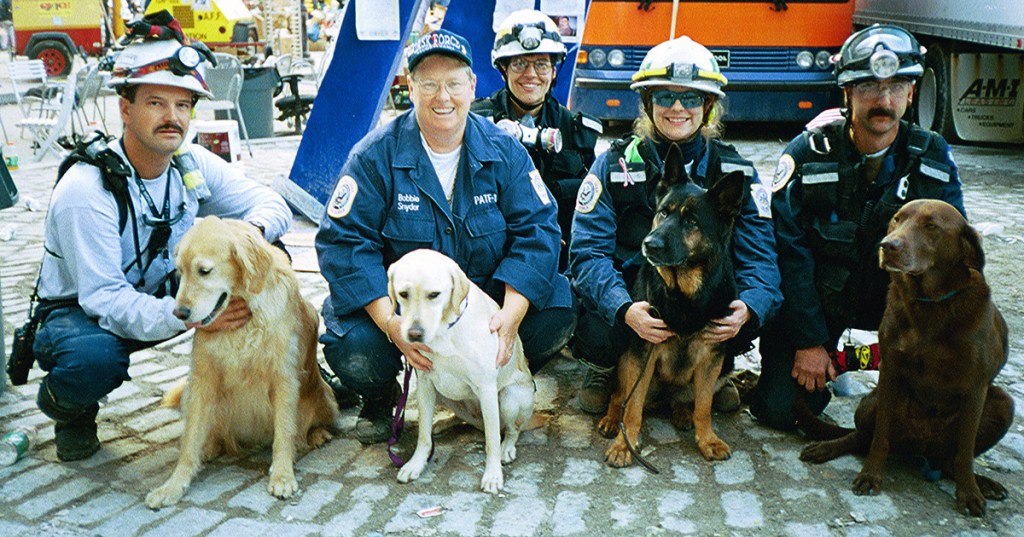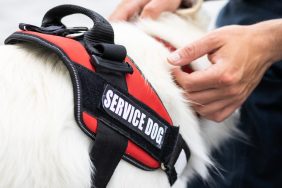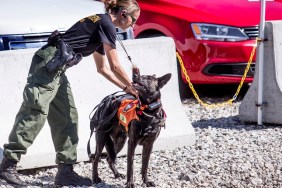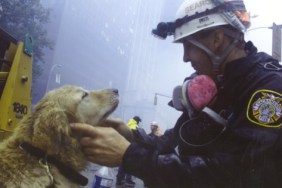Amid the rubble and dust, the jarring scenes and scents of death and destruction, hardworking dogs from across the country came to New York City to help the search and rescue efforts following the terrorist attacks on September 11, 2001. No one knows exactly how many working dogs were in New York (and at the Pentagon) that September, but estimates state about 900 canines were there lending a paw.
At Ground Zero, the dogs worked every day to help in search and rescue with their volunteer handlers for an average of 10 days. They had day shifts and night shifts lasting anywhere from 12 to 16 hours searching for survivors and human remains while comforting victims and rescue workers.
A vet’s perspective
Cindy Otto, DVM, PhD, was one of the first veterinarians to arrive on September 12, 2001, and she stayed for nine days looking after the dogs — ensuring they got the necessary breaks and remained hydrated. “September eleven is really personal to me… The dogs were so powerful,” Otto tells DogTime. Otto is director of the Penn Vet Working Dog Center in Philadelphia and an associate professor at the University of Pennsylvania.
While at Ground Zero, the veterinarians were looking for any potential problems in the dogs. “The dust was pretty irritating especially after it rained and everything was wet, and the dust kind of became concrete. So we were making sure there wasn’t any irritation on their pads and things like that,” Dr. Otto says.
After she returned from Ground Zero, Dr. Otto spoke to representatives at the American Kennel Club’s Canine Health Foundation about their call for proposals for funding studies on the dogs of 9/11. Dr. Otto and her fellow researchers started following the dogs in October and by January 2002, they had the AKC funding to study the animals. In the study, 95 dogs from the 9/11 rescue efforts were followed against 55 control dogs who also were search and rescue dogs but didn’t work as part of 9/11.
Resilience revealed
What Dr. Otto and other researchers found was actually quite remarkable. “We found that these dogs live long — the median lifespan for dogs in the study was about 12 years old. So we were really impressed by that,” she says. “There is a high percentage of cancer but not any different in the control dogs. So that gave us some encouragement as people were all concerned that [working at Ground Zero] was going to cause cancer since there has been a higher incidence in humans that responded… The percentage is almost identical between the deployed [9/11] dogs and the control,” Dr. Otto says.
Also worth noting: The working dogs didn’t have the protective gear the humans had.
What’s more, two of the dogs from the study are still living — both are 15 years old: Morgan, an English Springer Spaniel, who worked on Staten Island in human remains detection; and Bretagne, a Golden Retriever, who worked at Ground Zero with rescue and recovery. Bretagne is also somewhat of a celebrity as a finalist in the American Humane Association’s Hero Dog contest.
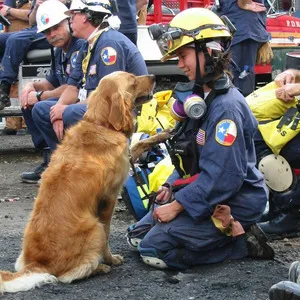
Not only did the dogs fare well overall, one study (done in conjunction with a psychologist) showed the animals actually helped protect the handlers against post-traumatic stress disorder (PTSD). They compared the dog handlers to the rest of the first responder population. “The dog handlers have a lower incidence of PTSD overall, but if the dog ended up dying within three years after [9/11], the incidence of PTSD went up,” Dr. Otto says. “It makes sense because the dog is your anchor and really kind of holds you together.”
Because of Dr. Otto’s experience with the dogs of 9/11 and her subsequent research, she founded the nonprofit Penn Vet Working Dog Center in 2007 and opened its doors in 2012, with a purpose of enhancing research and training for working dogs so that their lives are better, healthier, and longer. In fact, all the dogs who train through the center are named after the dogs of 9/11. Bretagne’s namesake just graduated as a diabetic alert dog.
“Definitely the good that came out of the dogs who worked at 9/11 was our working dog center,” says Dr. Otto. “It was truly inspired by those dogs.”
